
Newly-arrived Expedition 47 astronaut Jeff Williams—who boarded the International Space Station (ISS) almost two weeks ago, thereby kicking off his third discrete increment aboard the orbiting outpost—assisted with the establishment of a new national record yesterday. At 12:41 p.m. EDT Wednesday, he surpassed the 373-day cumulative experience time of former NASA astronaut Mike Foale, thereby entering fourth place on the list of the most experienced American spacefarers of all time. It comes on the eve of the 20th anniversary of the selection of Williams’ class of astronauts, the largest ever selected by NASA, who were wryly nicknamed the “Sardines.” Even though he is a fraction of the way through his current expedition, Williams has already advanced from sixth into fourth place, passing both Don Pettit and Mike Foale, with the expectation that he will enter first place and become the new U.S. spaceflight endurance record-holder by the time he returns to Earth in early September. And yesterday’s achievement also means that his class of astronauts now hold the top four spots on the U.S. spaceflight experience table, as well as having secured numerous other accolades over the years.
The class, whose 35 U.S. selectees were formally announced by NASA on 1 May 1996—and who were later joined by nine international candidates in August of that same year—remains the largest ever selected by the civilian space agency. Twenty years later, it boasts relatively few astronauts still on active status, but all of them have contributed immensely to NASA’s ongoing mission of exploration. Their accomplishments include the first female commander of a space station, the world’s fifth most seasoned spacewalker, the first registered Native American astronaut, and, most recently, the first American to chalk up almost an entire year in orbit.
The size of the class was dictated by the impending start of space station construction, which, by the spring of 1996, had long since changed direction from the U.S.-led Space Station Freedom effort—with long-standing Japanese, Canadian, and European involvement—into the International Space Station (ISS), with Russia as a key partner. More than 2,400 applicants were screened through the fall of 1995 and into the spring of 1996, leading to the selection of 10 shuttle pilots and 25 mission specialists. In size, this equaled the number of candidates chosen in January 1978 for NASA’s first shuttle-era astronaut class, the Thirty-Five New Guys (TFNGs), and with the addition of nine candidates from Canada, Spain, Sweden, Japan, France, Germany, and Italy, swelled to 44 members.
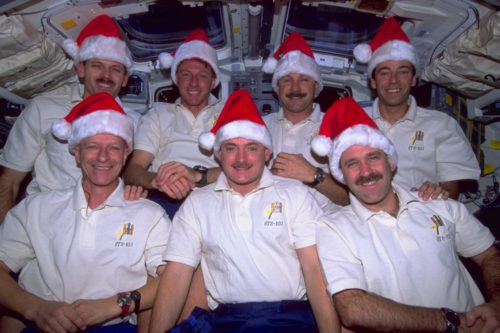
When the entire class—the 16th to be chosen in NASA’s history—arrived at the Johnson Space Center (JSC) in Houston, Texas, on 12 August 1996, they were welcomed by veteran astronaut Robert “Hoot” Gibson, then serving as deputy director of the Flight Crew Operations Directorate (FCOD). Gibson’s words of welcome were propitious. “They have a very exciting time ahead of them,” he noted, and, indeed, the Sardines started making records when their very first member reached orbit. Announced in February 1998, the STS-95 crew—which notably featured the return to space of Project Mercury pioneer John Glenn—included Spain’s first national spacefarer, Pedro Duque. Having previously trained in a backup capacity for the EuroMir ’94 mission to Russia’s Mir space station and later for the STS-78 shuttle flight, Duque spent almost nine days in orbit aboard Shuttle Discovery in October-November 1998.
Interestingly, several of the international Sardines had previously pulled additional astronaut duties, both in prime and backup roles. Japan’s Mamoru Mohri had participated in the Spacelab-J science mission in September 1992, whilst Canada’s Steve MacLean flew aboard Shuttle Columbia a few weeks later on STS-52 and Italy’s Umberto Guidoni traveled to orbit aboard STS-75 in the spring of 1996. Meanwhile, Sweden’s Christer Fuglesang had backed-up the EuroMir ’95 expedition to Mir, whilst Pedro Duque, Germany’s Gerhard Thiele, and Italy’s Umberto Guidoni had trained as alternate payload specialists for several shuttle science missions. In time, Canada’s Julie Payette would become the first Canadian (and the first non-U.S. woman) to board the ISS and Soichi Noguchi would become the first Japanese citizen to perform an EVA outside a space station. Later still, Fuglesang became Sweden’s first national astronaut (and its first spacewalker), whilst France’s Philippe Perrin became the first of his countrymen to perform an EVA in support of ISS assembly.
The first U.S. member of the Sardines to actually reach orbit was Scott Kelly, who piloted Shuttle Discovery on the third Hubble Space Telescope (HST) servicing mission in December 1999. In doing so, he became one of the three highest-flying Sardines—the others being Duane “Digger” Carey and Mike Massimino—in that he traveled to the approximately 335-mile (540-km) altitude occupied by the iconic telescope. Flying over Christmas 1999, Kelly also became one of the first Americans since the Skylab era to have observed the festive season in space. In time, with two subsequent long-duration expeditions to the ISS, Kelly also became the only U.S. citizen to have celebrated three Christmases in space.
Meanwhile, Jeff Williams—who is now in the early stages of the fourth mission of his astronaut career—became the first Sardine to perform an EVA. Launched aboard Shuttle Atlantis on STS-101 in May 2000, Williams was also designated “EV1,” the lead spacewalker, a role which he had received following the transfer of the mission’s original EV1 to another flight. His six-hour and 44-minute excursion with astronaut Jim Voss was the first of no fewer than 77 EVAs by Sardines over a period of more than 15 years. Four of those EVAs, involving Sardine Mike Massimino on two missions, were dedicated to Hubble servicing, whilst the remaining 73 spacewalks focused on the assembly and maintenance of the Earth-circling space station.
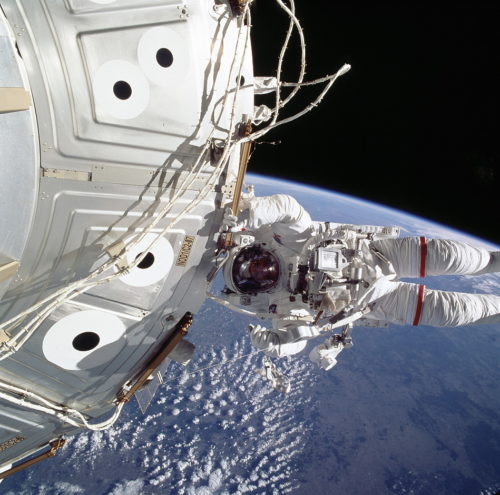
In fact, more than a third of the 193 ISS-focused EVAs performed by U.S. and international astronauts and cosmonauts have involved Sardines. These have run the gamut in terms of duration, from a mere 14 minutes in the case of an aborted spacewalk by Expedition 9 cosmonaut Gennadi Padalka and Sardine Mike Fincke in June 2004 to the eight hours and seven minutes spent outside by Fincke and his STS-134 crewmate Drew Feustel on STS-134, the final voyage of Shuttle Endeavour, in May 2011. Others have climbed high on the world EVA experience table, with Sardine Rick Mastracchio currently in fifth place on the list, having accrued 53 hours and four minutes across nine excursions, and Fincke also sitting within the Top 10 most seasoned spacewalkers in history.
Working both inside and outside their spacecraft, representatives of this remarkable class of astronauts have participated in virtually all aspects of the construction of the sprawling station, including the installation of several of its core pressurized facilities. Sardine Mark Polansky piloted STS-98, which delivered the U.S. Destiny lab in February 2001, whilst fellow Sardines Steve Frick and Mark Kelly commanded the missions to install and activate Europe’s Columbus and Japan’s Kibo modules.
In addition to the shuttle crews which toiled inside and outside the station for more than a decade to assemble this remarkable engineering accomplishment, 11 Sardines have lived and worked aboard the ISS for several months at a time. The first to do so was Peggy Whitson—who served for six months on Expedition 5 in June-December 2002, during which time she was named as NASA’s first “Science Officer”—and she went on to secure several other accolades for the Sardines and for women in general. After becoming the first woman to command a space station, when she led Expedition 16 from October 2007 through April 2008, Whitson went on to become the first Sardine (and the first woman) ever to be appointed Chief of the Astronaut Office. She served a three-year tenure from 2009-2012 and is presently training for her next mission: the six-month Expedition 50/51 increment, scheduled to begin in November 2016. Aged 55/56 when she flies, she will slightly pip Barbara Morgan to become the oldest female spacefarer in history.
And as Morgan began her career in the space business amid the tragedy of Challenger, so the Sardines have also suffered tragedy over the years. Three of their number—Willie McCool, Dave Brown, and Laurel Clark—were killed on 1 February 2003, when Shuttle Columbia disintegrated during re-entry at the end of STS-107. Their loss, after a highly successful, 16-day science mission, profoundly altered the trajectory of NASA’s goals and led directly to the retirement of the shuttle fleet and its replacement with a new vehicle, which is now bearing fruit with the Orion Program. Other Sardines have remained unflown, including Yvonne Cagle, Buenos Aires-born Fernando “Frank” Caldeiro, and Christopher “Gus” Loria. Of these three, Caldeiro sadly lost a lengthy battle with a brain tumor in October 2009, whilst Loria might have flown aboard shuttle mission STS-113 in the fall of 2002, but sustained a severe back injury at home which took him permanently out of training.
Just as ill-fortune befell some Sardines, the fates smiled more kindly on others. Originally assigned as a backup crew member for Expedition 6 to the space station, Don Pettit was assigned—only four months before launch—to the prime slot, following the medical disqualification of veteran astronaut Don Thomas. In time, Pettit went on to become one of the first Americans to return to Earth aboard a Russian Soyuz spacecraft, which became acutely necessary following the loss of Columbia and the grounding of the shuttle fleet. He also flew two long-duration ISS increments, totaling 369 days in orbit, during which he became the first U.S. astronaut to celebrate two Christmases and New Years in orbit. “My collateral damage toll,” wrote Pettit in a NASA blog, “includes being on-orbit for two Thanksgivings, Christmas, New Year, birthdays, anniversaries, a science fair, school plays, recitals, and Valentine’s Day.” Yet with the station’s internet connectivity, Pettit was able to send flowers. In his mind, the real essentials for surviving in space “are not flint, steel, and powder … but your credit card number and network login.”
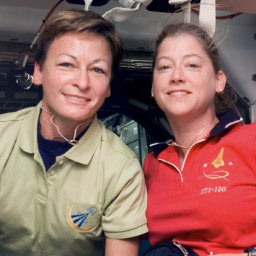
On his most recent mission, which ended on 1 July 2012, Pettit became the oldest long-duration U.S. resident of the station, having turned 57 years old a few weeks earlier. That record was broken by 58-year-old Jeff Williams, when he launched into orbit on 18/19 March. At the opposite end of the pole, the youngest Sardine was Canada’s Julie Payette, who was 35 years old when she flew aboard STS-96 on the first shuttle docking mission to the ISS in May 1999. Although Pedro Duque was assigned a few weeks earlier, Payette also became the first member of the Sardines to be named to a crew in the wake of their April 1998 graduation from Astronaut Candidate (ASCAN) training.
Significantly, two of the Sardines who attracted attention throughout their respective careers were Mark and Scott Kelly, who became the first identical twin brothers ever selected for astronaut training. Of the twins, Scott was first to fly—aboard STS-103 on the third Hubble servicing mission—and later became the first to command a mission, whilst Mark went on to launch four times aboard the shuttle. Scott’s career also involved four flights, which uniquely encompassed two shuttle and two Soyuz missions. “We are competitive people and have been competitive our whole lives, in sports,” Scott Kelly recalled of his relationship with his brother. “However, we don’t seem to be very competitive amongst ourselves.” At the time of writing, Scott Kelly, together with fellow Sardines Whitson, Fincke, Pettit, and Williams, is part of an exclusive club in that he has completed two long-duration increments aboard the ISS.
And the names of those five Sardines—Scott Kelly, Mike Fincke, Peggy Whitson, Jeff Williams, and Don Pettit—together with Mike Foale, now reside at the top of the table for the most experienced U.S. spacefarers. Today, Williams is pressing into the 375th cumulative day of his two-decade-long astronaut career, with the expectation that on Saturday, 2 April he will pass Whitson to enter third place and on Thursday, 7 April, will exceed Fincke to position himself in second place behind Kelly. However, it will be several more months before Williams comes close to seizing the 520-day cumulative space experience crown from Scott Kelly. That record is expected to fall to him on 23/24 August, about two weeks before Williams himself returns to Earth.
Twenty years since their arrival as a group of fresh-faced astronaut candidates at NASA, and having performed 77 spacewalks and supported dozens of shuttle, Soyuz, and ISS missions, few of the Sardines remain on active flight status. Several occupy management roles, with Pat Forrester currently serving as Deputy Chief of the Astronaut Office. Mike Fincke has since 2015 headed up the Commercial Crew Branch of the office, whilst others are deeply involved in Orion training. Only one other Sardine is presently assigned to a forthcoming mission: Peggy Whitson will join Commander Shane Kimbrough’s Expedition 50 crew when she arrives at the space station in November 2016, before rotating into the command of Expedition 51 in March 2017 and leading the ISS through her own return to Earth in May. This promises to bring her close to breaking the cumulative records of both Kelly and Williams.
Be sure to “Like” AmericaSpace on Facebook and follow us on Twitter: @AmericaSpace
Missions » ISS » Missions » ISS » Soyuz TMA-M » Missions » ISS » Soyuz TMA-M » TMA-20M »



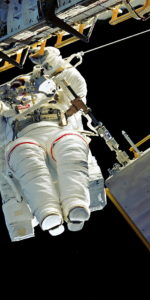
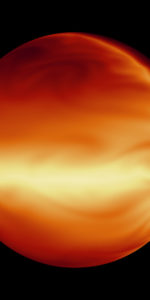
6 Comments
6 Pings & Trackbacks
Pingback:Space Station Ready for BEAM Installation, ULA and Bigelow Announce Future Plans « AmericaSpace
Pingback:Expedition 47 Crew Returns Safely to Earth After Six-Month ISS Mission « AmericaSpace
Pingback:Space Station Open for Commercial Crew, As EVA-36 Team Installs IDA-2 « AmericaSpace
Pingback:Spacewalkers Ready for US EVA-37, Days Ahead of Expedition 48 Crew Return « AmericaSpace
Pingback:World’s Most Experienced Female Astronaut Discusses Upcoming ISS Expedition « AmericaSpace
Pingback:Expedition 48 Crew Wraps Up Six-Month Space Station Mission « AmericaSpace